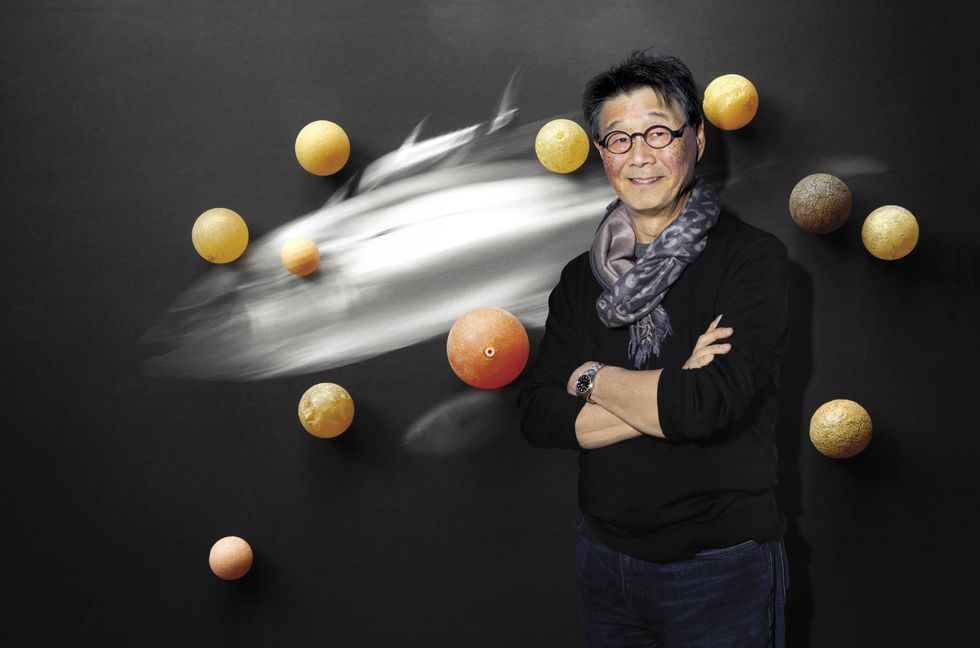When artist Jerry Takigawa, 68, saw a jarful of plastic pieces retrieved from the entrails of an albatross at the Monterey Bay Aquarium, he had an epiphany: “We live in a disposable world and mistake material goods for sustenance. But everything we throw away ultimately comes back to us.” It was a lightbulb moment for the Carmel Valley resident and the impetus for “False Food,” his latest exhibit, on view this month at Monterey’s Green Chalk Contemporary art gallery.
Merging the artist’s experience in both photography and graphic design, “False Food” is a series of pigment prints of black-and-white photographs overlaid with colorful plastic debris, which is often mistaken for food by seabirds and, for this body of work, was sourced from the aquarium. It “represents an intersection of purpose and process—the same kind of intersection inherent in good design,” says Takigawa, whose work also hangs in the permanent collections of SFMOMA, the Brooklyn Museum of Art, and the Library of Congress.
The images are beautiful, told “through aesthetics, not fear”—a subtle visual language that makes Takigawa’s message about the deleterious effects of wasteful human behavior all the more powerful. This duality perhaps echoes the artist’s heritage and personal career. As a Japanese American, he is as familiar with our fast-moving Western ways and our wish for instant gratification as he is with the more measured Eastern mentality. And his divergent skills span the commercial (graphic design) and the philosophical, in the pursuit of fine art. “It is often the place between two distinctly discrete modes of communication that can be the most thought provoking,” says Marc D’Estout, who curated a recent show of “False Food” at San Francisco’s Museum of Craft and Design.
Takigawa’s ultimate goal here is to inspire change by bringing viewers to a heightened state of awareness and concern. “I’ll feel that I’ve done my job if even a few people consciously decide to stop using straws and throwaway coffee lids,” he says. “Every action, no matter how small, is effective and important.”
This article was published in 7x7's February issue. Click here to subscribe!





















